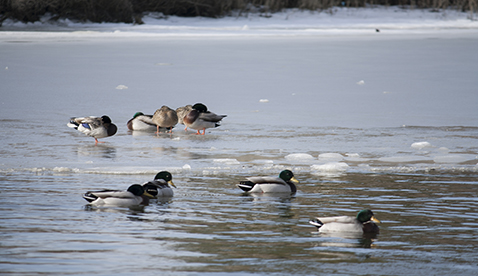WASHINGTON — President Donald Trump’s plan to slash 90 percent of Chesapeake Bay cleanup funding, which could dismantle several decades of environmental restoration, met resistance from Maryland’s Democratic congressional delegation.
The cuts, which would drop the budget for Chesapeake Bay programs from $73 million to $7.3 million, are nestled in a proposed 33.7 percent decrease in funding for the Environmental Protection Agency.
That would be a paltry sum “to support the nation’s largest estuary,” Sen. Chris Van Hollen, D-Maryland, said in a statement.
Maryland Gov. Larry Hogan told Capital News Service the state would fight hard against massive cuts to the bay cleanup program.
“This is yet another assault on clean water, from a president who campaigned saying he valued it,” William Baker, president of the Chesapeake Bay Foundation, said in a statement.
Trump tweeted in April 2017 that he was “committed to keeping our air and water clean but always remember that economic growth enhances environmental protection.”
Maryland’s bay-wide commercial harvest for all crabs rebounded from under 20 million pounds in 2013-2014, the lowest marks since 1990, to about 30 million pounds in 2016, according to statistics from Maryland’s Department of Natural Resources.
Critics said the proposed cuts to the EPA have the potential to derail the progress that Maryland has seen, putting both the economic growth and environmental protection Trump referenced in jeopardy.
“Protecting the bay is important not only to protect a great national treasure, but to protect our economy,” Sen. Ben Cardin, D-Maryland, told Capital News Service. “If you look at Maryland’s economy, tourism, the watermen, the boating industry, all of these people rely on a healthy bay for their economic livelihood.”
The Chesapeake Bay’s importance to Maryland is underscored by the efforts that federal, state and local officials over the years have coordinated to preserve it. It was the first estuary in the nation to see restoration efforts of this magnitude, according to the Chesapeake Bay Foundation.
“We look forward to working with our Chesapeake delegation in Congress to move the decimal point over to its rightful place and restore bay funding to $73 million,” said Chante Coleman, director of the Choose Clean Water Coalition, a group of more than 200 organizations in the bay region.
Video by Carly Kempler
Under the Clean Water Act of 1972, the Chesapeake Bay Program Office is tasked with implementing “pollution control programs such as setting wastewater standards for industry.” The office also sets limits on contaminants.
Van Hollen introduced legislation in November 2017 called the Chesapeake Bay Farm Bill Enhancements Act, which would provide $300 million to the Regional Conservation Partnership Program, and an unspecified sum would be allocated to bay cleanup.
Trump tried to eliminate all funding to the Chesapeake Bay Program Office in his proposed fiscal 2017 budget.
“The Chesapeake Bay (Program) Office is the coordinating entity for all the partners in the Chesapeake… all of that depends on the federal government to coordinate the stakeholders’ responsibilities,” Cardin said. “If that program were to receive the type of coverage that is in president Trump’s budget, it couldn’t do its work.”
“The budget from the president, we hope, is dead on arrival because it would be bad news for our region,” Van Hollen said.

